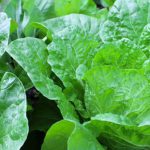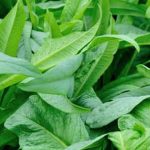Choosing the right site location for vegetable gardens is a crucial decision that can significantly impact the success of your gardening endeavor. From sunlight and shade to soil quality, water source, space and layout, climate and weather, pest and disease considerations, as well as accessibility and convenience, there are numerous factors to consider when determining the best location for your vegetable garden.
The amount of sunlight your garden receives is essential for the growth and productivity of your vegetables. Understanding shade patterns in your garden will also help you make informed decisions about where to plant different types of vegetables. Additionally, soil quality, including pH levels, composition, and drainage, plays a vital role in the successful cultivation of vegetables.
Ensuring a reliable water source and implementing proper irrigation methods are crucial for maintaining healthy plants. Adequate space for plant growth and an optimal garden layout are also important considerations for productivity.
Furthermore, climate, weather patterns, pest and disease risks at different site locations must be taken into account when choosing the ideal spot for your vegetable garden. Lastly, considering accessibility for maintenance and harvest as well as overall convenience for the gardener will contribute to a more enjoyable gardening experience.
Sunlight and Shade
When it comes to choosing the right site location for vegetable gardens, understanding sunlight and shade patterns is crucial. The ideal amount of sunlight needed for different types of vegetables can vary, but as a general rule, most vegetables require at least 6-8 hours of direct sunlight per day. Some leafy greens and herbs can tolerate partial shade, but the majority of fruiting vegetables like tomatoes, peppers, and cucumbers thrive in full sun.
To identify shade patterns in the garden, it is important to observe how the sun moves across the area throughout the day. Obstructions such as buildings, trees, or other structures can cast shadows and create areas of partial or full shade. It’s essential to take note of these patterns and choose a site location that maximizes sunlight for optimal vegetable growth.
In addition to natural shade patterns, it’s also important to consider potential sources of reflected heat and light that can affect plant growth. For example, light-colored surfaces like walls or pavement can reflect light onto plants and raise temperatures in certain areas of the garden. Understanding these factors will help in selecting the best site location for vegetable gardens to ensure sufficient sunlight for healthy plant development.
| Sunlight Requirement | Vegetable Types |
|---|---|
| 6-8 hours of direct sunlight per day | Fruiting vegetables like tomatoes, peppers, cucumbers |
| 4-6 hours of direct sunlight per day | Leafy greens and herbs |
Soil Quality
When choosing a site location for vegetable gardens, soil quality plays a crucial role in the success of your crops. The following factors are essential to consider when evaluating the soil quality of a potential garden site:
- Soil pH: The pH level of the soil determines its acidity or alkalinity, which can significantly impact plant growth. Most vegetables thrive in slightly acidic soil with a pH range between 6.0 and 7.0. Testing the soil pH is essential to determine if any adjustments need to be made through the addition of lime to raise pH or sulfur to lower it.
- Soil Composition: The composition of the soil, including its texture and structure, affects water retention, drainage, and nutrient availability. Sandy soils drain quickly but may require more frequent irrigation and fertilization, while clay soils retain water but may become waterlogged. Ideal vegetable garden soil is loamy, with balanced proportions of sand, silt, and clay.
- Drainage: Proper drainage is crucial for healthy root development and preventing waterlogging that can lead to root rot and other issues. To assess drainage at a potential garden site, observe how water behaves during periods of rain or irrigation. Standing water or slow drainage could indicate poor soil structure or natural topography that inhibits proper water flow.
Considering these factors will help ensure that your chosen site location provides an optimal environment for successful vegetable gardening. Conducting a thorough assessment of the soil quality will allow you to address any deficiencies through amendments or structural improvements before planting your vegetable garden.
Overall, understanding the importance of soil quality in vegetable gardening will guide you in making informed decisions regarding the most suitable site location for your garden. By prioritizing soil health and implementing proper care practices, you can create a favorable environment for your vegetables to thrive and yield abundant harvests.
Water Source
A reliable water source is essential for the success of any vegetable garden. The amount of water needed for vegetable plants varies depending on the type of vegetables being grown, but in general, most vegetables require consistent and adequate moisture to thrive. Choosing the right methods for proper irrigation can ensure that the plants receive the necessary water without waste or damage to the garden.
One method for proper irrigation in a vegetable garden is drip irrigation, which delivers small amounts of water directly to the base of each plant. This method is efficient and minimizes water loss due to evaporation or runoff. Another option is soaker hoses, which allow water to seep out slowly along their length, effectively watering the plants around them. Additionally, using mulch can help retain soil moisture by reducing evaporation and regulating soil temperature.
It is also important to consider the quality of the water source itself. If using tap water, it’s crucial to be aware of its pH and mineral content as certain vegetables may be sensitive to these factors.
Collecting rainwater in barrels can provide a natural and cost-effective alternative while minimizing environmental impact. By evaluating the different methods for proper irrigation and choosing a reliable water source, gardeners can ensure that their vegetable gardens receive the consistent moisture they need for healthy growth.
Finally, maintaining an adequate and reliable supply of water is essential throughout all stages of plant growth including germination, growth, fruit production and harvest time. Different methods such as manual watering or automatic irrigation systems should be considered based on proximity to an available freshwater sources and accessibility constraints within different site locations for vegetable gardens.
| Vegetable Garden Watering Methods | Advantages |
|---|---|
| Drip Irrigation | Efficient delivery of small amounts of water directly to plant roots. |
| Soaker Hoses | Slowly release water along their length to effectively hydrate surrounding plants. |
| Rainwater Collection | Natural and cost-effective alternative that minimizes environmental impact. |
Space and Layout
When planning the site location for a vegetable garden, one of the key considerations is the amount of space available for plant growth. Adequate space is essential to ensure that vegetables have room to thrive and produce a bountiful harvest. When choosing a site location, it’s important to assess the available space and plan the layout in a way that maximizes productivity while also allowing for easy accessibility.
Maximizing Plant Growth
Different vegetables require varying amounts of space to grow effectively. Some plants, such as tomatoes and peppers, need ample room for their root systems to spread out, while others, like carrots and lettuce, can be planted more closely together. Understanding the specific spacing requirements of each type of vegetable is crucial for maximizing plant growth and optimizing yield.
Optimizing Garden Layout
In addition to considering individual plant spacing, gardeners should also think about the overall layout of their vegetable garden. Some factors to consider include the orientation of rows or beds to maximize sunlight exposure, as well as creating pathways for easy access and maintenance. A well-planned layout not only improves accessibility for gardening tasks but also contributes to overall garden aesthetics.
Adequate Space and Accessibility
Having enough space between rows or beds allows for better air circulation and minimizes competition between plants for water and nutrients. Additionally, a thoughtfully planned layout makes it easier for gardeners to tend to their crops, whether it’s weeding, watering, or harvesting. By ensuring adequate space and optimizing garden layout, individuals can create an environment where their vegetable plants can flourish and produce an abundant harvest with ease.
Climate and Weather
When it comes to choosing the location for a vegetable garden, one of the most important factors to consider is the climate and weather patterns in the area. The climate and weather can have a significant impact on the success of a vegetable garden, so it’s crucial to choose a site location that will be conducive to healthy plant growth.
Understanding how to mitigate potential issues related to climate and weather can make all the difference in having a thriving garden.
Understanding Climate and Weather Patterns
Before selecting a site for your vegetable garden, it’s essential to understand the climate and weather patterns specific to your region. This includes factors such as average temperatures, precipitation levels, humidity, and frost dates.
Different types of vegetables have varying temperature and water requirements, so it’s important to align your site location with these needs. For example, heat-loving plants like tomatoes and peppers will require full sun and warm temperatures, while cool-season crops like lettuce and spinach may need some protection from intense heat.
Mitigating Potential Issues
Once you have identified the climate and weather patterns in your area, there are several strategies you can employ to mitigate potential issues that may arise. This can include using row covers or hoop houses to protect plants from early frosts or sudden temperature drops.
Additionally, considering microclimates within your garden can also be beneficial – areas next to buildings or with southern exposure may be warmer than other parts of the garden. You can also choose vegetable varieties that are well-suited to your specific climate and weather conditions.
By taking into account the impact of climate and weather patterns on your selected site location for a vegetable garden, you can make informed choices that will contribute to the overall success of your gardening endeavors. Considering these factors from the outset will empower you to proactively address potential challenges and create an environment where your vegetables can thrive despite variable climate conditions.
Pest and Disease Considerations
When selecting a site location for vegetable gardens, it is essential to consider potential risks associated with pests and diseases. These factors can significantly impact the success of your garden and the overall health of your plants. By understanding the potential risks and implementing effective strategies for prevention and management, you can create a thriving and productive vegetable garden.
One important consideration when assessing pest and disease risks is the local environment surrounding your site location. Certain areas may be more prone to specific pests or diseases due to factors such as nearby vegetation, wildlife presence, or prevailing weather conditions. It is crucial to assess these environmental factors before establishing your garden to proactively address any potential issues.
To effectively prevent and manage pests and diseases in your vegetable garden, consider implementing the following strategies:
- Regular inspections: Conduct frequent inspections of your plants to detect any signs of pest infestation or disease development early on.
- Crop rotation: Rotate your crops each season to disrupt pest life cycles and reduce the risk of disease buildup in the soil.
- Companion planting: Utilize companion planting techniques to repel pests and attract beneficial insects that can aid in natural pest control.
- Organic pesticides: Consider using organic pesticides or insecticidal soaps as a safe and environmentally friendly option for managing pest infestations.
- Proper sanitation: Practice good garden hygiene by removing any infected plant material promptly and maintaining clean gardening tools to minimize disease spread.
By incorporating these strategies into your gardening practices, you can effectively mitigate potential risks associated with pests and diseases at your chosen site location for vegetable gardens. This proactive approach will contribute to the overall health and productivity of your plants, allowing you to enjoy a bountiful harvest throughout the growing season.
Accessibility and Convenience
In conclusion, the site location for vegetable gardens plays a crucial role in the success of a garden. The accessibility and convenience of the chosen location can significantly impact the maintenance, harvest, and overall experience for the gardener. A well-planned site location can make gardening more enjoyable and efficient, while an impractical location can lead to frustration and reduced productivity.
When considering the accessibility and convenience of a site location for vegetable gardens, it is important to take into account factors such as proximity to water sources, ease of maintenance, and accessibility for harvest. A conveniently located garden with easy access to water will make irrigation more manageable. Similarly, a location that is easily accessible for maintenance tasks such as weeding, pruning, and fertilizing can save time and effort for the gardener.
Ultimately, by carefully evaluating these considerations and selecting a site location that prioritizes accessibility and convenience, gardeners can create an environment that fosters successful vegetable gardening. Aspiring gardeners should take the time to assess their available space, layout options, climate conditions, pest risks, soil quality, and sun exposure before deciding on a site location for their vegetable garden.
With proper planning and attention to detail in choosing the right site location, gardeners can promote healthy plant growth and maximize their harvests.
Frequently Asked Questions
Where Is the Best Location for a Vegetable Garden?
The best location for a vegetable garden is one that receives at least 6-8 hours of sunlight per day. It should also have well-draining soil and be easily accessible for watering, weeding, and harvesting.
What Is the Best Position for a Vegetable Garden?
The best position for a vegetable garden is in a spot with good air circulation and minimal shade. It should also be situated near a water source to make watering more convenient. Additionally, consider placing it away from trees or large structures that could block sunlight.
Where Is the Best Place to Put a Food Garden?
The best place to put a food garden is in an area with fertile soil, preferably close to the kitchen for easy access to fresh produce. It’s important to choose a location that will allow the plants to thrive and be convenient for regular maintenance and harvesting.

If you’re looking to get into vegetable gardening, or are just looking for some tips on how to make your current garden better, then you’ve come to the right place! My name is Ethel and I have been gardening for years. In this blog, I’m going to share with you some of my best tips on how to create a successful vegetable garden.





